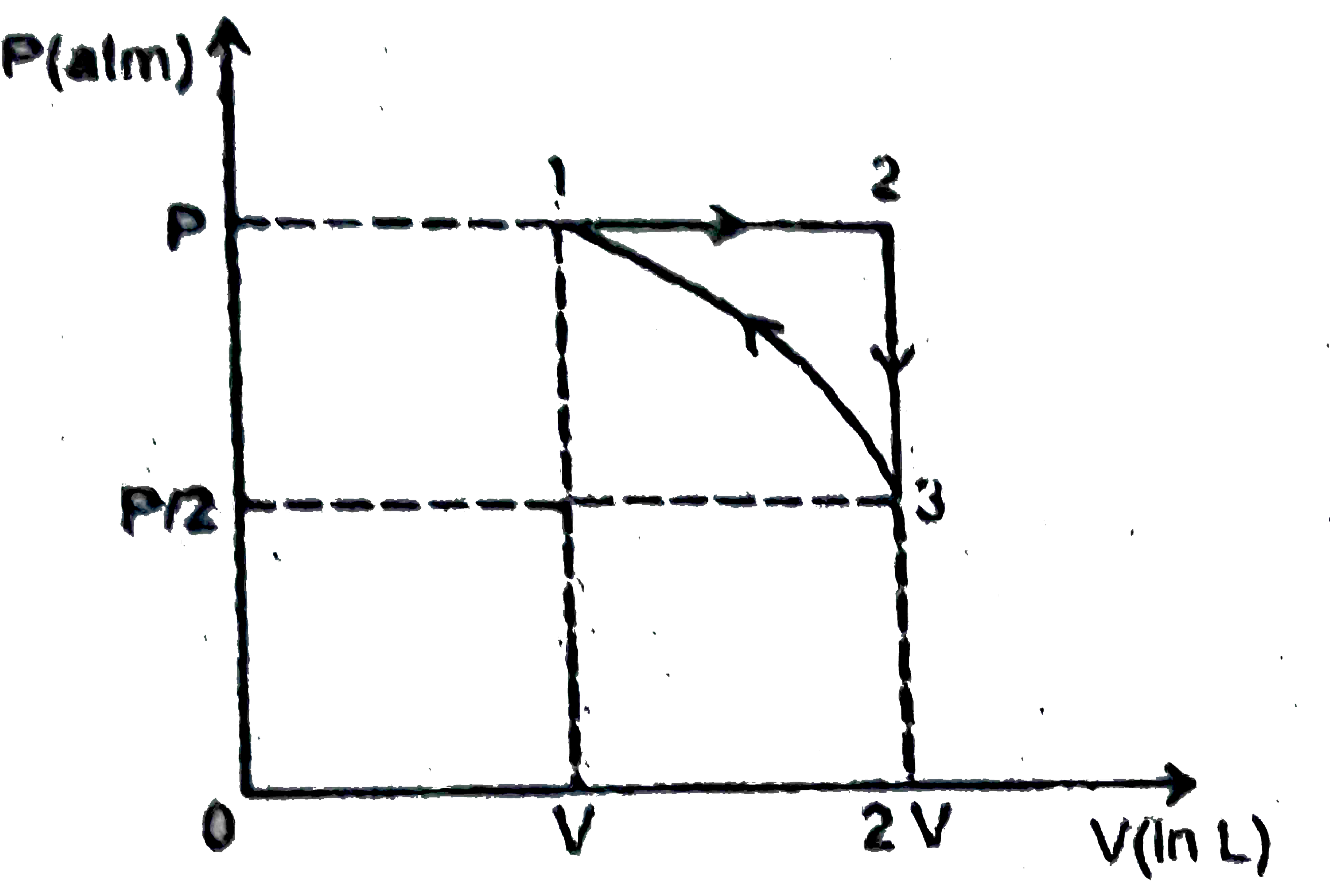In a reversible isochoric change
ΔW=0
ΔQ=0
ΔT=0
ΔU=0
The correct Answer is:B
Step by step video, text & image solution for In a reversible isochoric change by Physics experts to help you in doubts & scoring excellent marks in Class 11 exams.
Topper's Solved these Questions
Similar Questions
Two moles of a perfect gas undergo the following processes:
a. A reversible isobaric expansion from (1.0atm,20.0L) to (1.0atm,40.0L).
b. A reversible isochroic change of state from (1.0atm,40.0L) to (0.5atm,40.0L)
c. A reversible isothermal expansion from (0.5atm,40.0L)→(1.0atm,20.0L).
i. Sketch with lables each of the processes on the same P−V diagram.
ii. Calculate the total work (w) and the total heat change (q) involved in the above process.
iii. What will be the values of ΔH for the overall process?View SolutionTwo moles of a perfect gas undergo the following processes :
(a) a reversible isobaric expansion from (1.0 atm, 20.0 L) to (1.0 atm, 40.0 L)
(b) a reversible isochoric change of state from (1.0 atm, 40.0 L) to (0.5 atm, 40.0 L)
(c ) a reversible isothermal compression from (0.5 atm, 40.0 L) to (1.0 atm, 20.0 L)
(i) Sketch the labels of each of the processes on the same p-V diagram.
(ii) Calculate the total work (W) and the total heat change (q) involved in the above processes.
(iii) What will be the values of ΔU,ΔH and ΔS for the overall process ?View Solution
Knowledge Check
- Question 1 - Select One
Two moles of an ideal gas undergo the following process :
(a) a reversible isobaric expansion from (P atm, VL) to (P atm , 2VL).
(b) a reversible isochoric change of state from (P atm , 2V,L) to (P/2 atm, 2VL)
(c) a reversible isothermal compression from (P/2 atm, 2VL) to (P atm, VL).
Sketch with labels each of the processes on the same P−V diagram.A B
B C
C D
D
- Question 2 - Select One
In reversible isochoric change
AΔW=0BΔQ=0CΔT=0,DΔU=0 - Question 3 - Select One
In a reversible adiabatic change ΔS is
Aequal to nRlnV2/V1B0Cequal to CVdTDinfinity
Two moles of a perfect gas undergo the following process: (a) A reversible isobaric expansion from (1.0 atm, 20.0 litre) to (1.0 atm,40.0litre). (b) A reversible isochoric change of state from (1.0 atm, 40.0 litre) to (1.0 atm, 40.0 litre). (b) A reversible isochoric change of state from (1.0 atm, 40.0 litre) to (0.5 atm, 40.0 litre). (c) A reversible isothermal compression from (0.5atm, 40.0 litre) to (1.0 atm, 20.0 litre). (i) Sketch with labels each of the process on the same P−V diagram. (ii) Calculate the total work (W) and the total heat change (q) involved in the above process. (iii) What will be the value of ΔU,ΔH and ΔS for the overall process?
View SolutionMatch the column-1
Column IColumn II(A)ΔS=nCvlnT2T1(P)ΔSsys for an irreversible isochoric process(B)ΔS=−ΔUsysT(Q)|ΔS|surr for a reversible isochroric process(C)ΔS=nCvlnT2T1+nRlnV2V1(R)ΔSsurr for a reversible isochoric process(S)ΔSsys for a reversible processView SolutionIn a reversible adiabatic change ΔQ is
View SolutionFor a reversible spontaneous change, ΔS is _________ .
View SolutionIn a reversible isothermal process, the change in internal energy is :
View Solution

